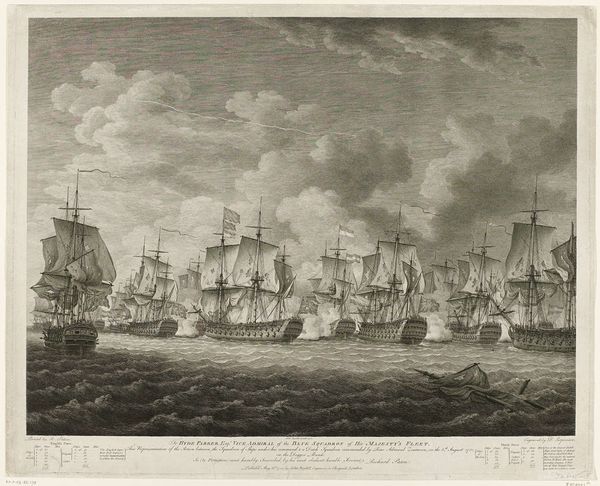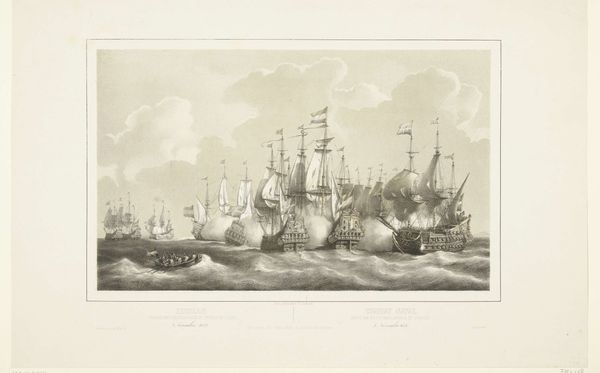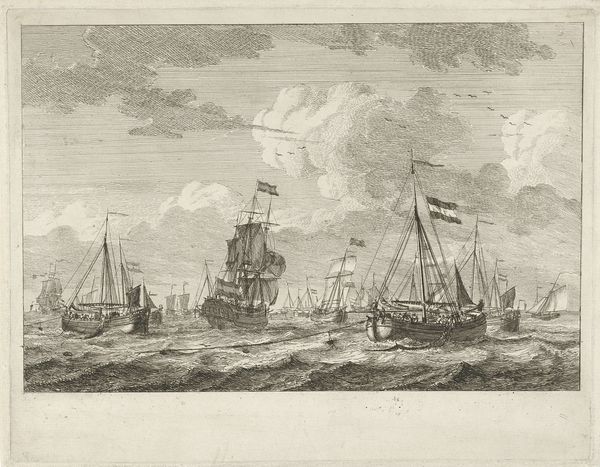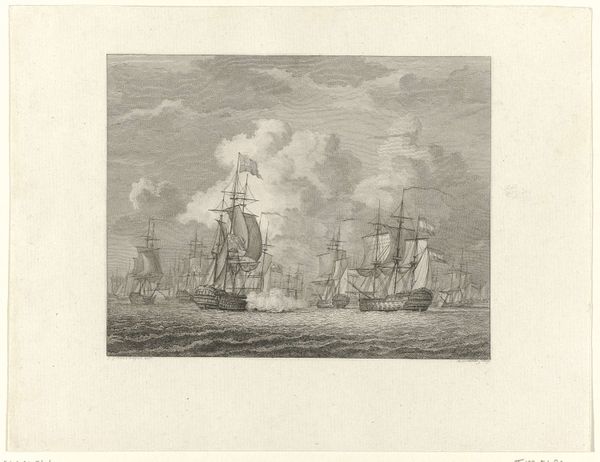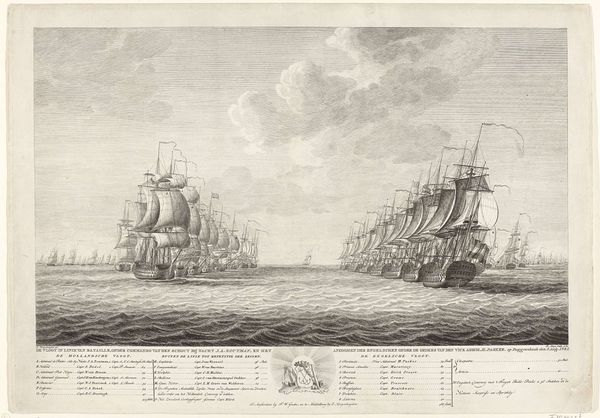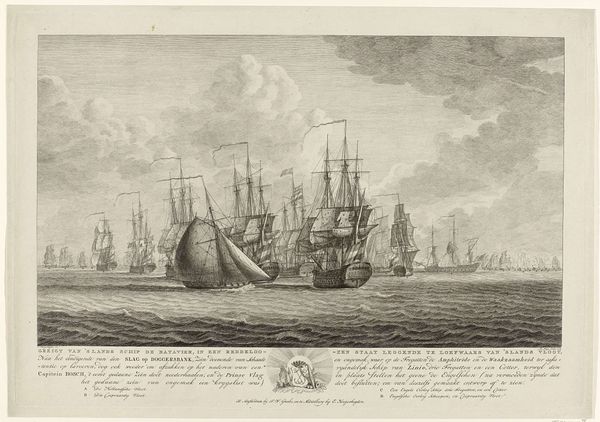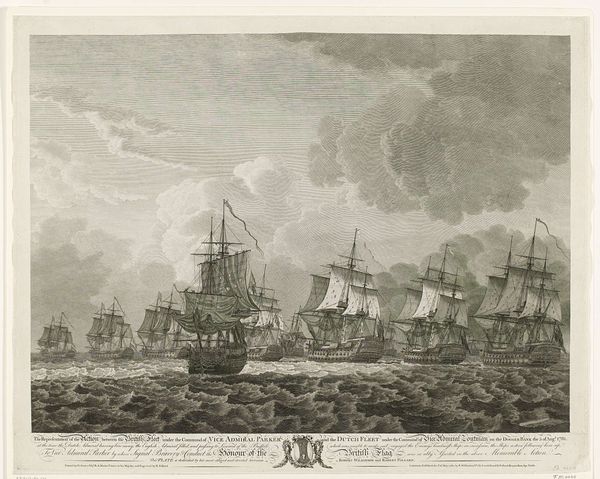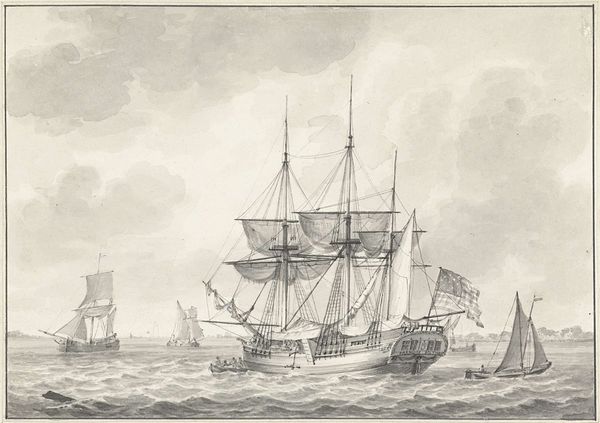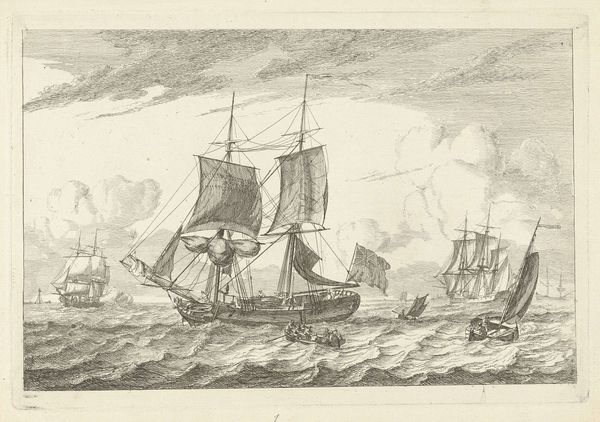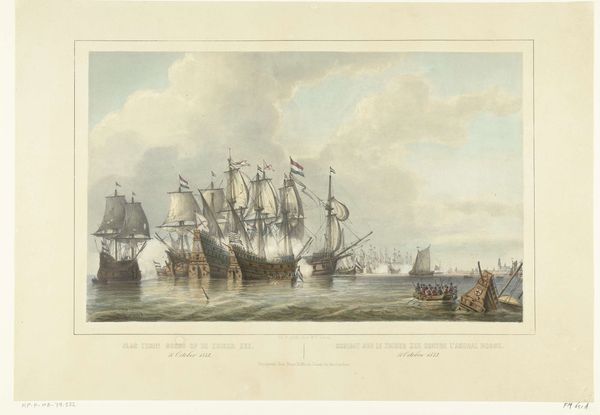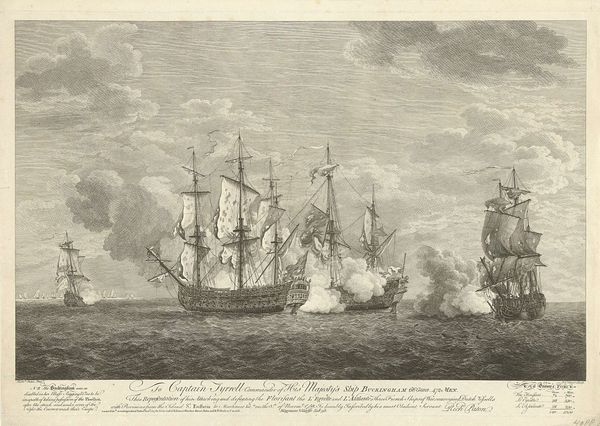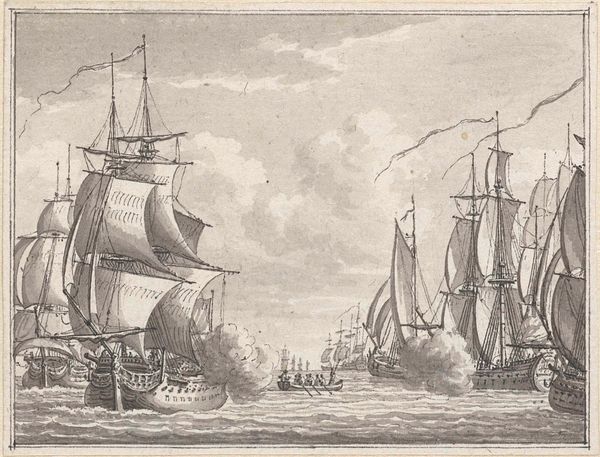
Dimensions: height 417 mm, width 595 mm
Copyright: Rijks Museum: Open Domain
Editor: So, this is “Zeeslag bij Doggersbank, 1781,” or the Battle of Dogger Bank, 1781, by Robbert Muys, an etching from 1784. There's such incredible detail in the ships and the smoky haze of battle; it definitely feels like an intense moment captured. What symbols or visual cues do you see embedded within this scene? Curator: Notice how the flags serve not just as identifiers, but also as potent symbols of national pride and naval strength. They carry the weight of political ambitions and trade rivalries of the time. What emotional responses do you think Muys aimed to evoke by foregrounding these flags amidst the chaos of battle? Editor: That's interesting. I hadn't really considered the flags beyond their literal meaning. It feels like they're meant to instill both fear in the enemy and courage in their own crew. Do you see any other symbols used by Muys? Curator: Consider the positioning of the ships, especially those engaged in direct conflict. Does the arrangement convey a particular narrative or strategic advantage? And think about the light—how does the illumination (or lack thereof, given the smoke) play into creating an emotional response? Does it speak to ideals of heroism, or a sense of loss? Editor: It definitely amplifies the drama, with those flashes of light emphasizing certain ships and obscuring others. It's like a play of visibility and concealment that adds to the uncertainty of war. Looking closely, what would you say the iconography conveys about broader 18th-century maritime culture? Curator: The Dogger Bank battle becomes a microcosm. It reflects the larger power dynamics unfolding across the seas at that time, especially naval dominance as crucial for economic and political control. So how does Muys use the imagery to tell a story, not just of a single battle, but of a shifting world order? Editor: I see how this etching, beyond depicting a historical event, embodies the era's anxieties and ambitions surrounding naval power. It’s amazing how much cultural information is embedded within a single image!
Comments
No comments
Be the first to comment and join the conversation on the ultimate creative platform.
